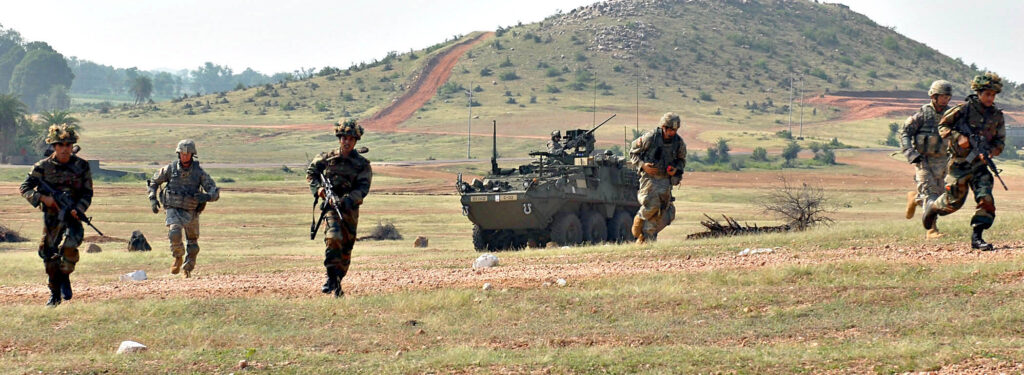Russia-Ukraine Update

Call it CYA if you’d like on the part of US officials, but misallocating forces in an offensive because of political reasons is one of the most common mistakes that a military can make:
The main goal of the counteroffensive is to cut off Russian supply lines in southern Ukraine by severing the so-called land bridge between Russia and the occupied Crimean Peninsula. But instead of focusing on that, Ukrainian commanders have divided troops and firepower roughly equally between the east and the south, the U.S. officials said.
As a result, more Ukrainian forces are near Bakhmut and other cities in the east than are near Melitopol and Berdiansk in the south, both far more strategically significant fronts, officials say.
American planners have advised Ukraine to concentrate on the front driving toward Melitopol, Kyiv’s top priority, and on punching through Russian minefields and other defenses, even if the Ukrainians lose more soldiers and equipment in the process.
Michael Kofman (among others) has been warning about Ukrainian over-concentration on Bakhmut since the beginning of the year, and there’s reason to think that he’s correct. But there are also some reasons for optimism. Ukrainian forces are gaining some ground and there’s strong evidence that they’re inflicting a lot of punishment, which will obviously matter for the rest of the war. Much will depend on whether Russia can retake some of this ground through its own counteroffensive, which depends to great extent on how well Russia can reconstitute power after the losses inflicted by this offensive. I’ve argued that the equipment, training, technology, and munitions situations will increasingly favor Ukraine as we move deeper into the war (at least until late 2024), but that’s built on a set of assumptions that could be wrong. This is a situation in which cluster munitions, as distasteful and destructive as they can be, could make a lot of difference.
“The main benefit is that the enemy is now very scared to go on assault,” said Stanislav, who, like other soldiers, spoke on the condition that only his first name or call sign be used because of security concerns in discussing sensitive military matters.
Russian units advancing with armored vehicles and unmounted infantry halt their forward movement to allow troops to seek cover from the ricocheting shrapnel, soldiers said. “They even recognize the cluster bombs by the whistle they make when headed their way,” said Stanislav, a member of Ukraine’s 14th Mechanized Brigade.
The capability is particularly important in light of Russia’s offensive push near the towns of Lyman in the eastern region of Donetsk and Kupyansk in the Kharkiv region to the north. The Kremlin is forcing Ukraine to defend those cities at a time when Kyiv needs soldiers focused on its counteroffensive in the south. Having a weapon that slows the Russian advance allows Ukraine to preserve force strength.
That Russian counter-offensive effort seems to have already collapsed, meaning that the Russians aren’t really capturing any territory to offset (slow, grinding, incremental) gains on other parts of the front. You wonder how decision makers got themselves stuck in the Western Front in World War I? Now you know…
The total number of Ukrainian and Russian troops killed or wounded since the war in Ukraine began 18 months ago is nearing 500,000, U.S. officials said, a staggering toll as Russia assaults its next-door neighbor and tries to seize more territory.
The officials cautioned that casualty figures remained difficult to estimate because Moscow is believed to routinely undercount its war dead and injured, and Kyiv does not disclose official figures. But they said the slaughter intensified this year in eastern Ukraine and has continued at a steady clip as a nearly three-month-old counteroffensive drags on.
Russia’s military casualties, the officials said, are approaching 300,000. The number includes as many as 120,000 deaths and 170,000 to 180,000 injured troops. The Russian numbers dwarf the Ukrainian figures, which the officials put at close to 70,000 killed and 100,000 to 120,000 wounded.
Already one of the deadliest wars of the 21st century, and no end in sight. I know Loomis thinks that we shouldn’t feel bad about Russians getting their heads blown off, but I do. Killing Yankees so that white people could continue to own black people is maybe, in the grand scheme of things, somewhat worse than killing Ukrainians until they accept that they’re actually Russians, but of course we know that the real reasons young men choose war and violence often don’t have much at all to do with grand political narratives that they pretend to die for. Edwin Jemison was part of an army that threatened to destroy the United States, and his killing was a necessity; 120000 young Russian men were part of an invading army and their deaths is also a necessity, but we don’t have to celebrate any of those. 17 year old Jemison was malicious idiot (traits common to that age) and probably would have carried the values of his social class into adulthood… but maybe not, and I wish that the South’s planter-elite hadn’t given him the opportunity to get his head shot off at Malvern Hill before he had grown into the man he might have become.


